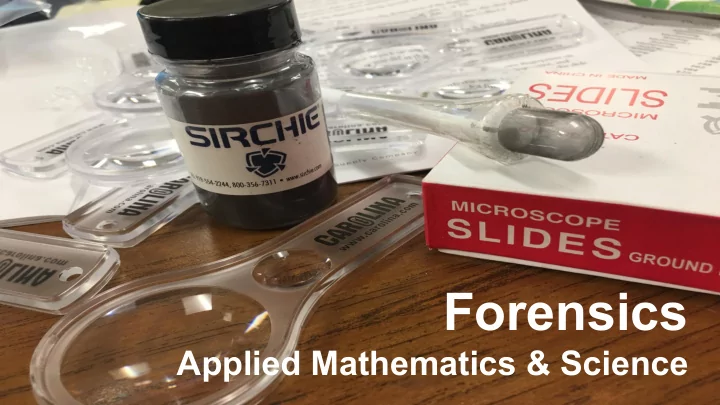

Forensics Applied Mathematics & Science
Course Description Through a forensic simulation, students will apply standards of mathematical and science engineering practices, use measurement, data, and statistics to investigate a crime scene and resulting evidence. Students will understand how forensic scientists process, use, and synthesize evidence from crime scenes to make reliable conclusions about events. Students will be able to use forensic techniques and synthesize the data gathered in order to make conclusions about a simulated crime.
Some of the things we study ● Blood Typing ● DNA & Karyotyping ● Ballistics - Trajectories and GSR ● Density ● Scale drawings & crime scene sketching ● Fingerprint lifting, patterns, and analysis ● Chemical properties of fibers ● Ink chromatography ● Hair analysis ● Entomology ● Impression evidence ● Forensic science careers
Some of the skills we practice ● Distinguishing between opinion, fact, conclusions, recommendations ● Drawing conclusions from evidence and data ● Summary and narrative writing ● Data analysis and probability ● Following multi-step procedures and being precise ● Communicating with others effectively ● Graphing and creating visual aids
Student voices Student Voices
Your turn! First, a little background on blood.
Procedure 1. Place 1 drop of blood into the well marked A. 2. Place 1 drop of blood into the well marked B. 3. Place 1 drop of Antibodies A into the well marked A. Stir. 4. Place 1 drop of Antibodies B into the well marked B. Stir.
Procedure Look for agglutination. See the pictures to determine the sample’s blood type.
Thank you!
Recommend
More recommend